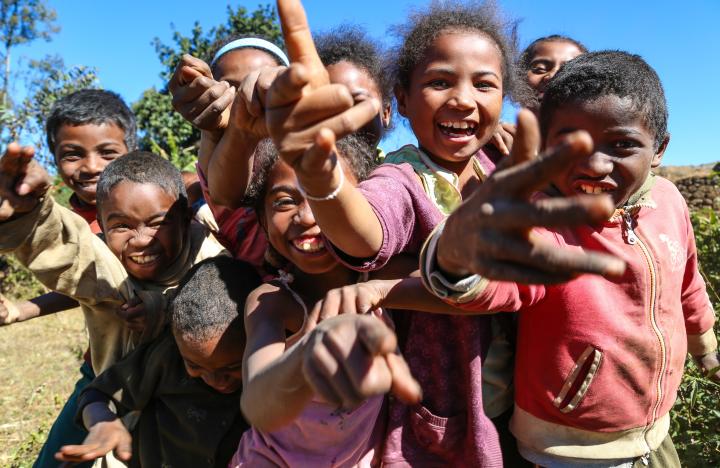
“The 2030 Agenda for Sustainable Development is the world’s blueprint for a better future for all on a healthy planet. On World Population Day, we recognize that this mission is closely interrelated with demographic trends including population growth, ageing, migration and urbanization.”
– UN Secretary-General, António Guterres
World Population Day, which seeks to focus attention on the urgency and importance of population issues, was established by the then-Governing Council of the United Nations Development Programme in 1989, an outgrowth of the interest generated by the Day of Five Billion, which was observed on 11 July 1987.
This year's World Population Day calls for global attention to the unfinished business of the 1994 International Conference on Population and Development (ICPD). Twenty-five years have passed since that landmark conference, where 179 governments recognized that reproductive health and gender equality are essential for achieving sustainable development.
A revolutionary Programme of Action was adopted by governments at the 1994 ICPD that called for women’s reproductive health and rights to take centre stage in national and global development efforts.

Reproductive Health
The 1994 ICPD Programme of Action called for all people to have access to comprehensive reproductive health care, including voluntary family planning, safe pregnancy and childbirth services, and the prevention and treatment of sexually transmitted infections.
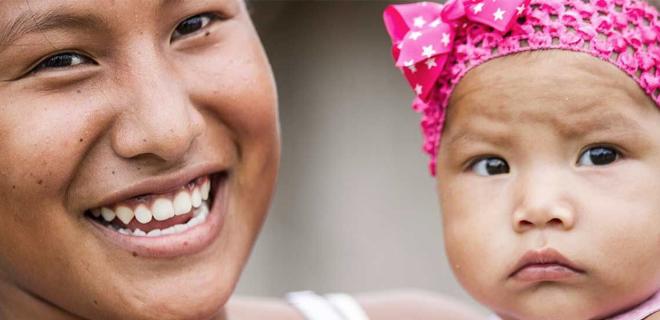
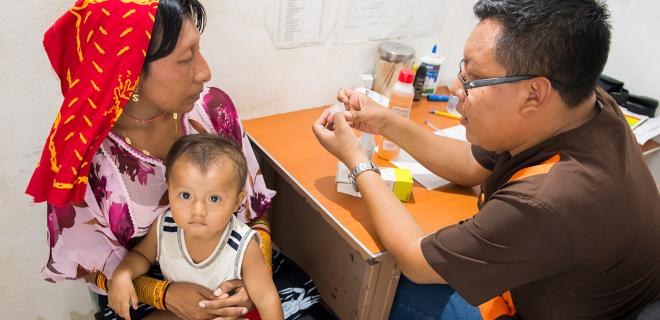
"I am convinced that the concept of integrated reproductive health services has been adopted by the leadership throughout the region. Now the challenge is to implement it."
— Mayra Buvinic, IDB Chief of Women in Development Unit
Inter- American Development Bank | Family Planning and Maternal Health
The Inter-American Development Bank (IDB) is promoting an integrated approach to reproductive health in a number of countries in Latin America. IDB projects, along with several other efforts funded by the IDB, reflect the beginnings of a fundamental shift in the way family planning services are being delivered.
In Bolivia, the health services component of a $60 million IDB loan to Bolivia's Social Investment Fund approved in 1995, for example, includes specific targets to increase the number of women receiving information or training about contraception from 35 percent to 60 percent — but this goal is part of a broader program to increase access to prenatal care and reduce infant and maternal mortality.
In Mexico, a $500 million Program of Essential Social Services partly funded by the IDB combines annual targets for expanding family planning services with a nutrition and counseling program for pregnant and lactating women.
In Venezuela, the Association for Alternative Sex Education (AVESA), an NGO devoted to sex education for teen-agers, is using a $500,000 technical cooperation grant from the IDB to fund an innovative public information campaign aimed at adolescents from low-income households.
"I am convinced that the concept of integrated reproductive health services has been adopted by the leadership throughout the region. Now the challenge is to implement it."
— Mayra Buvinic, IDB Chief of Women in Development Unit

Sustainable Development Goals
Goal 3: Good Health and Well-Being at all ages is essential to sustainable development. The provision of health education is an integral part of achieving better health systems.
International development projects foster better health systems, improve sanitation and hygiene, and increase access to health coverage.
UNDB facilitates global health and well being by supporting and encouraging investment in countries’ efforts to achieve universal health coverage and provide quality and affordable health services to everyone.
GENDER EQUALITY
Women’s empowerment and gender equality is a precondition for securing the well-being and prosperity of all people in our global community.
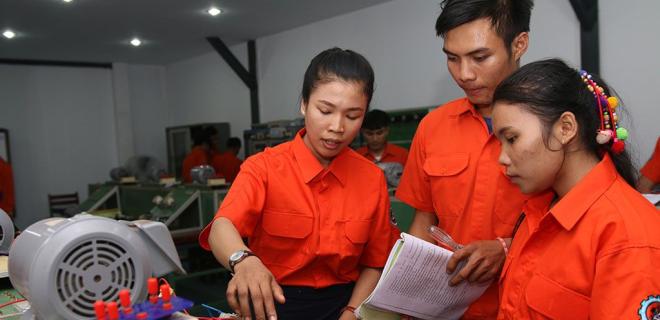
Trades for all. Sompong Vitsetsin with students in her refrigeration cooling systems class at the Champasak Technical-Vocational College near Pakse City in the Lao People’s Democratic Republic.
ASIAN DEVELOPMENT BANK | Gender and Development
The Asian Development Bank (ADB) recognized women needed opportunities to learn, work, contribute and earn, or the potential of half of the region would not be maximized. This understanding has evolved into policies that leverage the potential of women to benefit society as a whole.
Although women make up about 50% of the population in many countries in Asia and the Pacific, their ability to participate in all aspects of society is often limited due to discrimination, societal restrictions, and a lack of access to education and job opportunities.
ADB’s Policy on Gender and Development (GAD) is the guiding framework for gender and development activities. The Policy adopts gender mainstreaming as the key strategy for promoting gender equality and women’s empowerment across the full range of ADB operations — from country partnership strategies to the design and implementation of gender-inclusive projects and programs.
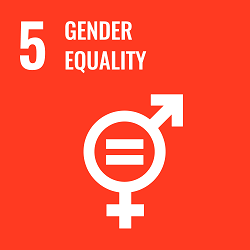
Sustainable Development Goals
Goal 5: Gender equality is not only a fundamental human right, but a necessary foundation for a peaceful, prosperous and sustainable world.
UNDB and its partners understand that providing women and girls with equal access to education, health care, decent work, and representation in political and economic decision-making processes will fuel sustainable economies and benefit societies and humanity at large.
International development projects have made a significant impact in the implementation of new legal frameworks regarding female equality in the workplace and the eradication of harmful practices targeted at women, which are crucial to ending the gender-based discrimination prevalent in many countries around the world.
SOCIAL PROTECTION
Ensuring social protection for all — especially for the most vulnerable in our global population — is critical in ending poverty in all its forms everywhere and essential to achieving sustainable development.

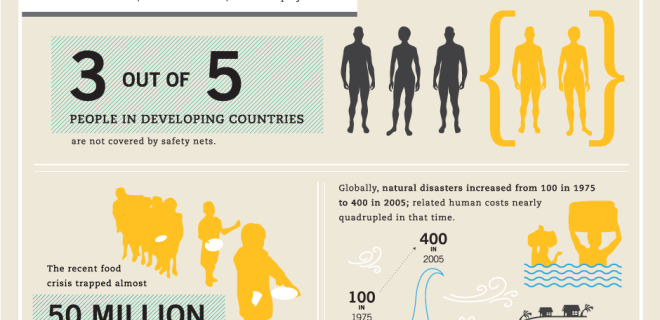
WORLD BANK | Safety Nets
Social protection systems help individuals and families, especially the poor and vulnerable, cope with crises and shocks, find jobs, improve productivity, invest in the health and education of their children, and protect the aging population. Social protection programs are at the heart of boosting human capital for the world’s most vulnerable. They empower people to be healthy, pursue their education, and seek opportunity to lift themselves and their families out of poverty.
Social protection has been key to this effort and many countries have embraced social protection instruments such as safety net programs as a means of harnessing human capital. Apart from providing struggling families with supplemental income, social safety nets also increase access to information and services, improve productivity, protect the elderly, and support people while they look for work.
An estimated 36 percent of the very poor escaped extreme poverty because of social safety nets, providing clear evidence that social safety net programs — which include cash, in-kind transfers, social pensions, public works, and school feeding programs targeted to poor and vulnerable households—are making a substantial impact in the global fight against poverty. Data also shows that these programs lower inequality and reduce the poverty gap by about 45 percent. These positive effects of safety net transfers hold true for low and middle-income countries alike.
Evidence now shows how safety nets cash transfers not only help nations invest in human capital, but also serve as a source of income for the poor, improving their standard of living. Today, some 2.5 billion people are covered by safety net programs and some 650 million people or 56 percent of the poorest quintile.
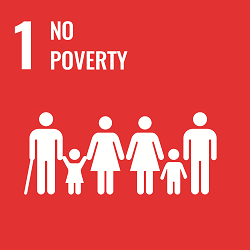
Sustainable Development Goals
Goal 1: No Poverty is essential to sustainable development. Poverty affects children disproportionately. One out of five children live in extreme poverty. Ensuring social protection for all children and other vulnerable groups is critical to reduce poverty.
International development projects foster better social protection systems to help the poor and vulnerable cope with crises and shocks, find jobs, improve productivity, invest in the health and education of their children, and protect the aging population.
UNDB facilitates putting an end to poverty by supporting and encouraging investment in countries’ efforts to implement social protection systems to enable individuals and families to achieve a better standard of living.


